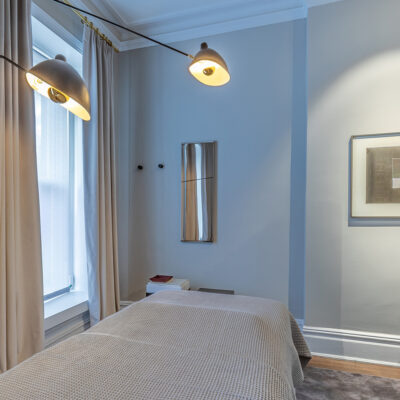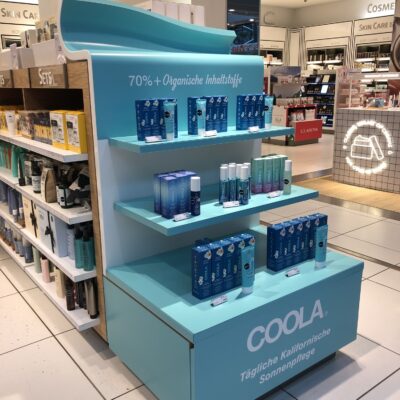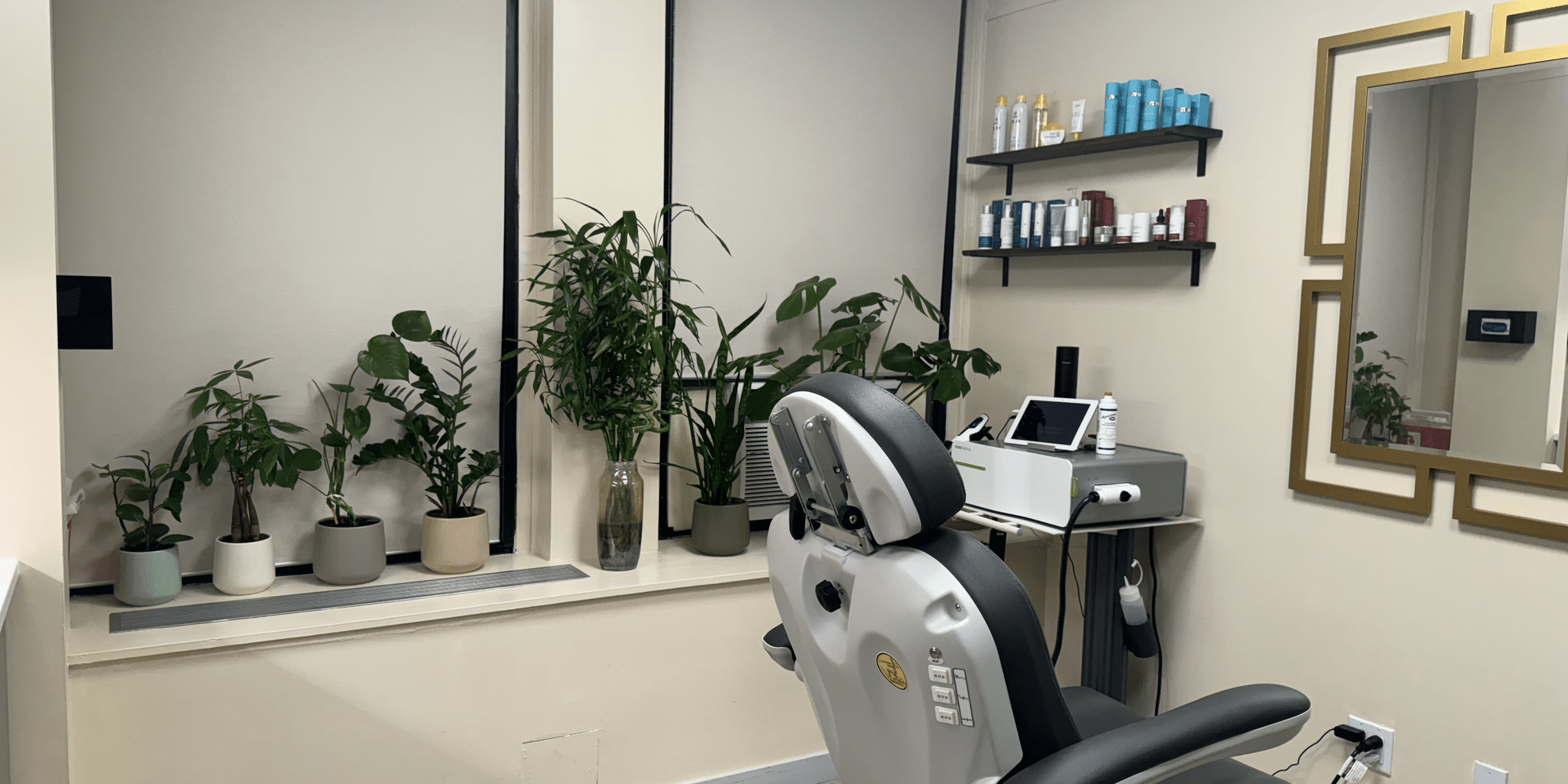
“We Are Oversaturated”: How Investment Is Changing The Med-Spa Market
Aesthetic nurse practitioner Chris Bustamante, founder of med-spa Lushful Aesthetics, believes the bustling med-spa industry has hit peak saturation. In fact, he theorizes it reached peak saturation a year or two ago.
“We are oversaturated,” he says. “I think that it’s now closing in on itself. Friends of mine who have been doing this longer than I have have told me that the most money that they’ve ever made was three years ago right after COVID. The ones I’m referring to have good businesses, too.”
In the saturated market, nailing down a niche can be a smart strategy. Launched in January 2022, New York City-based Lushful Aesthetics specializes in sexual enhancement services for gay millennial and gen Z men. Penis and scrotum filler and anal Botox, aka HoleTox, constitute the majority of its revenues, which increased approximately 180% between its first and second year in operation. Its business has been profitable since the beginning, according to Bustamante.
Beauty Independent spoke with Bustamante about how increased investment is affecting the med-spa industry, business models that work, retention issues and Linda Evangelista’s CoolSculpting calamity.
What’s going to influence the med-spa industry in a big way this year?
We are all well aware now that venture capitalists have found that there is money to make in aesthetics. It’s a billion-dollar industry. For a long time there was a lot of hesitancy around that, and people really weren’t diving into those spaces. It was very rare to find a VC-backed med-spa five years ago. Now they’re popping up left and right.
They start first in urban areas because you have the most people to work with, and they tend to run on a more volume-driven approach to business versus large ticket size. Most VC-backed med-spas can run at a deficit for a couple of years. What they do is they basically crash the market. They are able to offer the best prices. Later on, they can raise the prices back up because the competition is gone.
In this world, just like many others, the more products you buy, the better prices you get, the more samples you get. That’s how the pharma companies work. That’s why it’s a lot easier when you have a larger practice to be able to offer products at a better price because you’re purchasing more.
So, with these VC-backed med spas, they really are able to lump-sum purchase and offer the best price, which really disrupts the market. These are prices that we’ve really never seen before. How do you keep up with that? The reality is you can’t. There’s no financial way to actually do that. The only thing that you can do is just make sure services are top tier and that you can outperform on quality versus what they’re able to do in terms of quantity.
Most medical professionals don’t understand business. They’ve only worked in medicine. For me, it was an advantage coming from a place where I worked with VCs. I ran the mentorship program at Columbia Business School where I got to sit in on mentorship meetings with VCs who were talking to MBA students on how they need to scale their business and what would be appealing if they wanted to sell.
How much are prices crashing for units of Botox?
The average cost per unit of Botox is $14. In these VC-backed med-spas, it’s looking closer to $8. It’s a huge issue.

How do med-spas without VC-backing compete?
Large med-spas will really struggle if they’re not VC-backed to maintain the volume that they need to stay large. The ones that will be successful will be your smaller clinics. I have a friend with a studio in Alexandria, Virginia and one in Hunts County in Texas. She’s targeting rural areas with these tiny little studios that have just one injector.
It’s the smartest business model for right now because her cost is low. It’s all the same account for the pharma companies, so she doesn’t have to open up different accounts. She’s still building out and lowering her costs per services versus people who have these medium-sized or large-sized med-spas with five or six providers. How are you going to keep everyone booked and paid?
The reality is there’s only enough money in the account to pay everyone here. I have three full-time employees that are W2 employees with full benefits. I just believe that’s the right thing to do. I don’t want to keep people on a 1099, which most med-spas do. That’s really bad for retention.
Does the med-spa industry have a labor problem?
It has a retention problem. Most people do not get full-time benefits. When things are slow, guess whose hours are being cut? The 1099s. They might have one or two people that are on staff, but the rest of the people are not.
So, what do those people do? They leave and they take some patients with them and now the med-spa’s down again. It’s like this vicious cycle of always having to try to recoup your business versus just limiting how many employees you actually have, making them full-time, treating them well, paying them well and cultivating a business based on retention.
The volume of individual providers has swelled in the med-spa market in recent years. Based on current challenges, do you think the market will start to shrink and/or further consolidate?
Both will happen simultaneously. To get acquired means that what you have as a business is valuable. For a lot of these med-spas, that’s not the case. It can all look very glamorous, but there’s a lot of smoke and mirrors out there. When you have real conversations with real people behind the scenes and you hear how people are really struggling. A lot of med-spas just do lots of Botox and lip filler. How do you make money doing that? I’ll ask my reps, “How does that person pay their bills?” They’re like, “Oh, well, they actually haven’t paid their bill in a year.”
I have to constantly make sure that I am busy and that I have high-ticket items to fill the void so that we don’t have to rely on heavy volume. If I did lip filler all day, which is fun and I love it, that’s $700 a person. That’s not a lot of money. My sexual enhancement services, which are really my specialty, the average ticket size there is $7,500, and it can go even higher. I would say Botox injections for penis and scrotum are high up on there as well, but the fillers are really where I make a lot of money in that region.
The rest of my services are fine because they fill gaps where I need them to, but would my business still be here if I didn’t have my sexual enhancement services? I don’t think so. I wouldn’t be able to afford a PR company or a marketing agency. It would just be me again in one room, staying afloat. That’s the reality that a lot of my peers are in in this industry. They’re basically making what they were making before, but with all the stress of having to run their business. So, they’re either going to take the job offer at a bigger company or they’ll have to move out of the industry.
If med-spas compete solely on price, what does that mean for the patient?
It jeopardizes safety and aesthetic outcomes. It causes a lot of controversy in our industry amongst peers and affects the respect that we have for one another. All we really have for ourselves at this point is press and social media as outlets to educate the patients the way that we want to educate and to demonstrate the quality and the level of care that we deliver at the price point that we are offering them. If someone is just being price conscious, they’re just going to go elsewhere.
Complications do happen from a health and safety standpoint, but more so what happens are negative aesthetic outcomes that are not a safety issue. It’s not helpful for any of us. If the VC med-spa next door botches someone’s lips really badly and that person gets a viral TikTok talking about bad lip injections, it makes the whole industry look bad. It makes people more apprehensive to get treatments done in general, and it gives dermatologists ammunition. Dermatologists are usually the biggest culprits of trying to eliminate non-physician providers from treating patients.
I’m very apprehensive when I hear a lot of my peers who make a lot of their money doing trainings for new healthcare professionals to get into this industry, and they market to them like, “Are you burned out at the hospital? Are you tired of your job? Well, come into aesthetics.” Why do you want someone who’s burned out to come work in your industry? I want someone who’s like, “I’ve been in beauty. This is my passion. This is what I wake up and want to do every single day.”
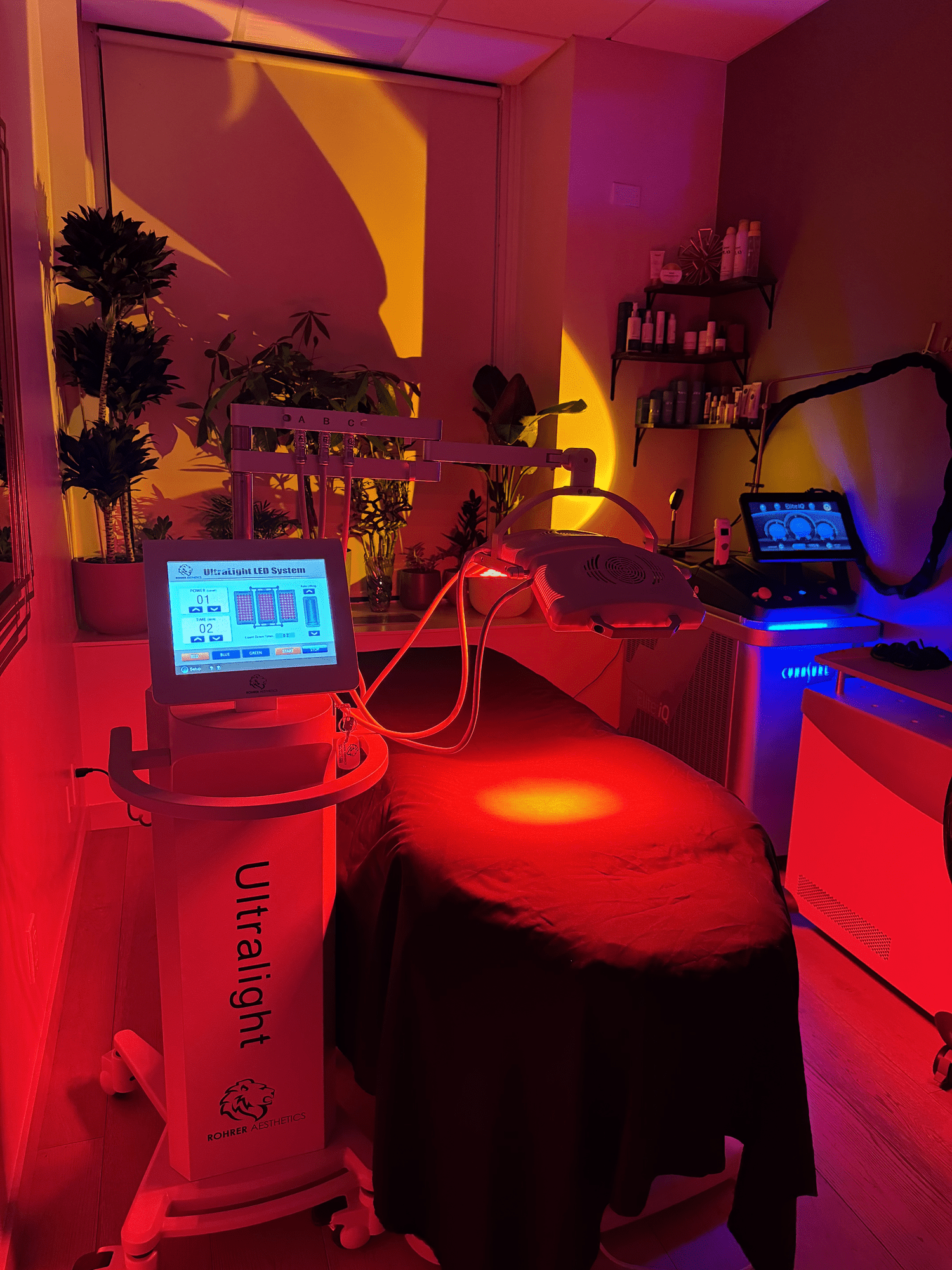
Do you think sexual enhancement treatments will become more mainstream?
It’s not something that is as mainstream yet, but it’s going to be, and I’m concerned for that. I’m concerned for other providers getting involved doing the specialty procedures that I do because I think that it’s going to cause a lot of negative outcomes. It’s going to create negative press, and I’m going to have to fight to show that it’s really safe and that positive outcomes should be expected.
I do three penis fillers a day. This has become one of the top places that people fly into to get these treatments done. Fifty percent of my patients that come in for sexual enhancement treatments are out of state. This is what I do. For me, the results are predictable. If I have a complication, it’s minimal and easily resolved. It’s never catastrophic, and it’s always something that I can intervene with. That’s what you want as a patient. The reality is those little things happen everywhere up top and below. Little things need to be tweaked and adjusted, so are you seeing the person that knows how to do that?
What do you think about the Linda Evangelista CoolSculpting debacle?
What happened to her is one of the specified potential complications of CoolSculpting. I don’t offer it here because I don’t believe in it. It’s a process that damages the fat cells so that your body basically just pees them out, but the complication is, instead of damaging the cells, it responds through a healing cascade and multiplies instead of dying.
That’s what happened to her allegedly, and that’s a real thing. I know people who have worked in practices that have seen it happen. It’s not common, but it does happen. If I was the person who owns that med-spa I would refer that patient to a plastic surgeon and pay for their liposuction.
She claimed to not have been aware of the side effects of CoolSculpting before she had the treatments. Should it be up to patients to do their own research about aesthetic treatments or should it be up to the provider to inform them or both?
It’s a bit of both. Vascular occlusion, for example, is a risk with filler. That’s when filler gets into a vessel, and it has to be dissolved. It compromises tissue because blood flow is not going there. That is not considered a negligent act. It’s an actual complication that just can happen, and it doesn’t mean the provider didn’t do their job well. What changes the incident is how the provider handles it, all the things that they did to resolve the issue.
Now, when it comes to something like infection, infection is not a risk that you should be concerned about when getting a filler or Botox. If you do get an infection, that is an issue for potential malpractice because that is not a complication that you should expect. It is so rare. That means proper precautions were not taken and the provider is in potential deep shit. So, it just depends on what it is that we’re talking about respectively.
What are the big opportunities for med-spa providers this year?
Decreasing the stigma associated with treatments allows for more open conversations between patients, which allows for better referrals. Before, I think everything was so hush hush. If someone had a positive or negative outcome, no one knew.
I think people discussing treatments more and talking about why they liked one place over the other allows patients to become more educated about what the type of experience that they should be expecting. Education is power and more providers being on social media and people listening to providers will hopefully help to eliminate a lot of the negative press around the industry.
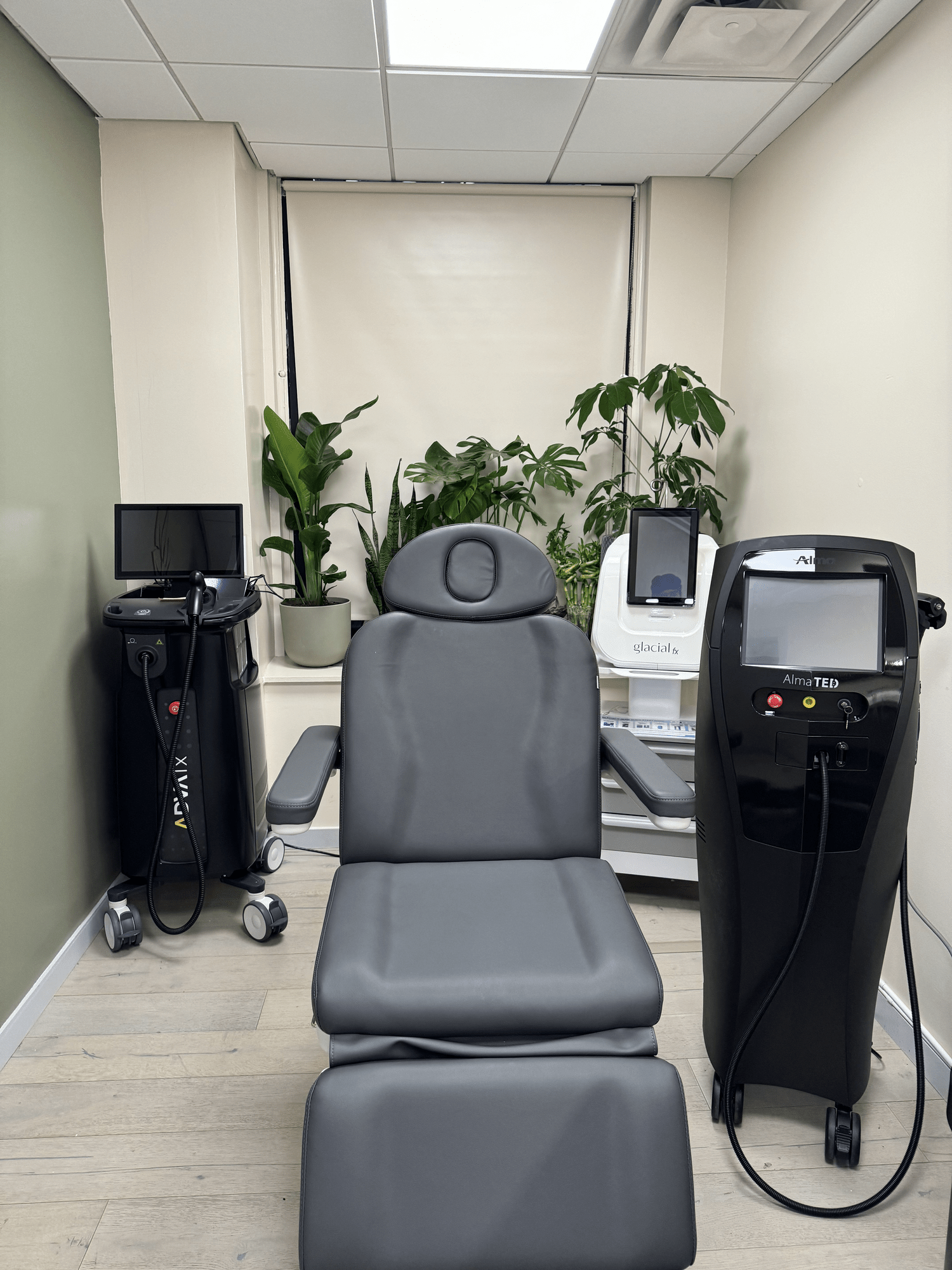
Do you aim to exit your business in the future?
It depends on what’s presented. I think that I am savvy enough to understand contracts and understand what someone is requesting of me, whether it’s from an investment standpoint, a buyout or an acquisition. All those things are not things that I am afraid of having a conversation about. Everyone has a price, and what they’re willing to bend for. It’s no different for me, but I also know my worth. Most people lowball you, and I know what that looks like, too.
Have you ever been approached for potential acquisition?
I was approached early on by one of SkinSpirit’s recruiters. They’re doing it very uniquely with SkinSpirit because they acquire you within the company and give you your own version of a SkinSpirit. It’s like a franchise version, but you get to still do your own thing. However, the contracts are very rigid, and they very much own you. I know people who have been acquired by them, and there’s mixed reviews on that.
It is nice to have everything laid out so cleanly for you and to have processes be really smooth. Med-spas, in general, struggle with operational process because most medical professionals do not know business. They take that out of the equation for you. The downside to that is that all the patients that you have brought in are their patients now, and you can’t ever take them with you. So, if you decide to leave, you cannot reach out to those patients again. If there’s any proof of that, then legal action can take place.


